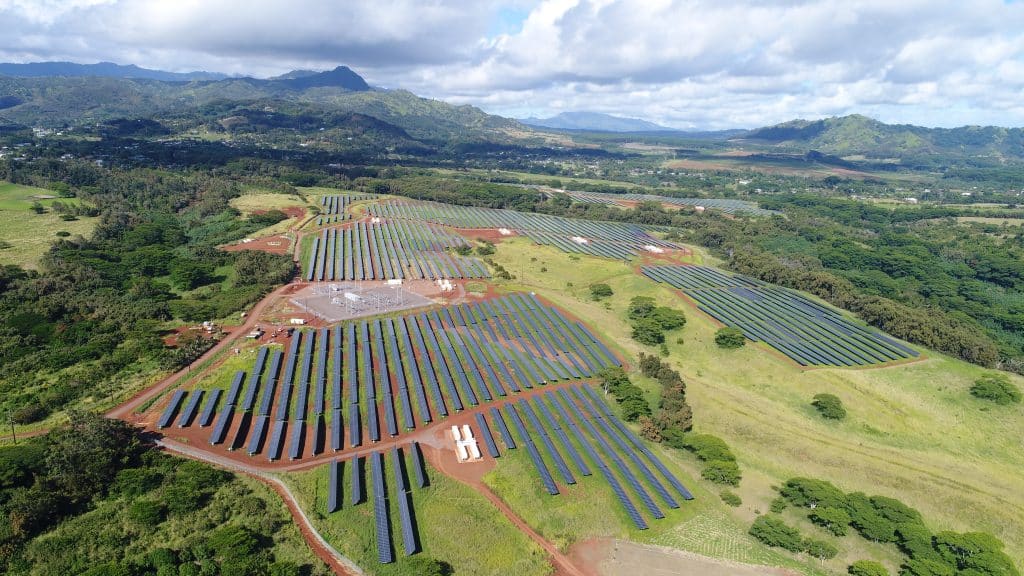Kaua‘i has a peak power demand of about 80MW for its approximately 70,000 residents and 30,000 visitors at any given time. In 2023, renewable energy accounted for about 60% of the energy produced on Kaua’i and the Kaua‘i Island Utility Company routinely operates at 100% renewables for several hours a day.
The Kaua‘i grid has a feature that many larger grids lack: a technology called grid-forming inverters. An inverter converts direct-current electricity to grid-compatible alternating current. The island’s grid-forming inverters are connected to utility-scale battery systems.
 As engineer Andy Hoke explains in an article for the National Renewable Energy Laboratory (NREL), the only economical way to integrate such high levels of renewable energy into our grids is with grid-forming inverters, which can be implemented on any technology that uses an inverter, including wind, solar photovoltaics, batteries, fuel cells, microturbines and even high-voltage direct-current transmission lines—critical to preventing blackouts if a generator fails.
As engineer Andy Hoke explains in an article for the National Renewable Energy Laboratory (NREL), the only economical way to integrate such high levels of renewable energy into our grids is with grid-forming inverters, which can be implemented on any technology that uses an inverter, including wind, solar photovoltaics, batteries, fuel cells, microturbines and even high-voltage direct-current transmission lines—critical to preventing blackouts if a generator fails.
Kaua‘i offers a preview of the electrical future, says Hoke, especially for places where utilities are now, or soon will be, relying heavily on solar photovoltaic or wind power. The reduced reliance on fossil fuels provides Kaua‘i ratepayers with the lowest average costs in the state. On O‘ahu, with constraints on available land and 19 times the electricity demand, the challenge is exponentially greater.
Nevertheless, the current $36 million investment in battery storage and advanced grid-forming inverters will potentially see Kaua‘i become the first of the Hawaiian Islands to reach a 100% Renewable Portfolio Standard.
